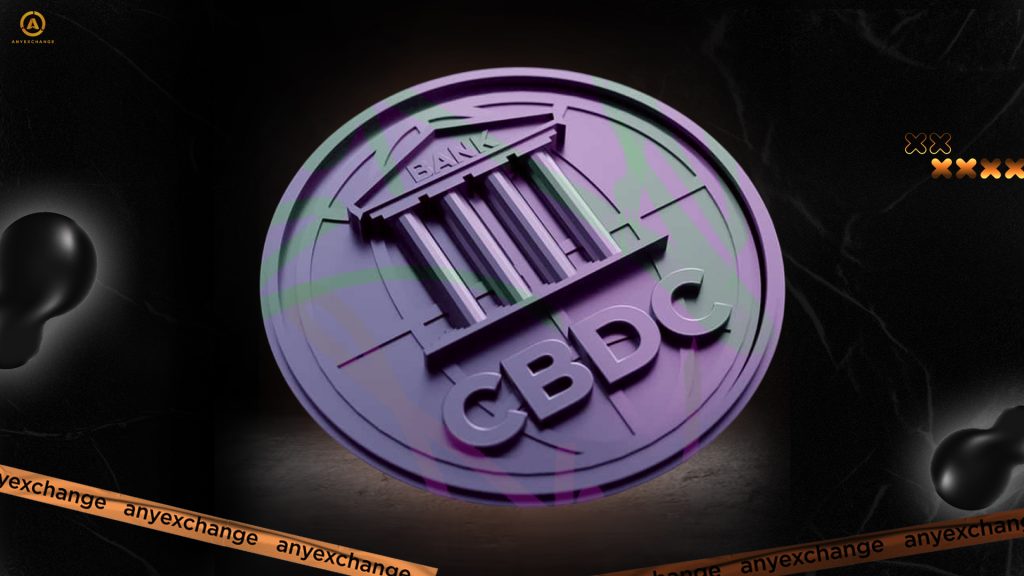
Did you know that blockchain technology for international money transfers is becoming the norm for major banks today? Such innovations can significantly speed up the process of transferring funds, reduce fees, and increase transparency of operations. For example, financial giants like JPMorgan and Santander are already confidently using distributed ledger technologies to streamline cross-border payments. And these are not isolated cases, but simply an example of one of the many ways blockchain is being applied to the global economy.
As technology advances, the integration of cryptocurrencies into the banking systеm is becoming an inevitable reality. In this article, we will look at what exactly is meant by this process, what factors are contributing to its development, and how the impact of cryptocurrencies on traditional finance is changing the banking market.
Reasons for the integration of cryptocurrencies into traditional finance

Let’s start with the main reasons why traditional financial institutions and cryptocurrencies are starting to interact closely.
High customer interest in cryptocurrencies
More and more private and institutional investors are looking at crypto assets as a means of storing capital, as an investment tool and as a means of payment. Their acceptance is growing, with millions of users around the world regularly transacting in bitcoins, stablecoins and other digital assets. Banks and financial institutions, recognizing this trend, are beginning to offer new crypto-related services to their customers.
Competition and technological innovation
With the emergence of fintech startups and decentralized platforms, traditional banks are facing the need to adapt to digital trends. For example, payment giants such as PayPal and Visa have been actively introducing cryptocurrency services in recent years, allowing users to pay for purchases using digital assets. To remain competitive, the banking sector is developing its own blockchain solutions and integrating crypto tools into its ecosystem.
Regulatory changes
The legalization of cryptocurrencies by banks and the development of legal frameworks are creating conditions for the safe and transparent use of crypto. Governments in many countries are setting new standards for the regulation of digital assets by banks. For example, the European uniоn is actively implementing MiCA standards, and the United States is developing tax control mechanisms and AML systems for cryptocurrency transactions. These processes contribute to the legalization of crypto assets in the traditional financial systеm and ensure their wider distribution.
Ways to Integrate Cryptocurrencies into Traditional Financial Systems

Banks’ Adoption of Blockchain Technologies
Today, banks working with cryptocurrencies are actively adopting blockchain to streamline financial transactions. They are doing so to improve process efficiency, reduce transaction processing time, and lower costs.
How exactly are banks using blockchain? For example, HSBC is using blockchain to automate letter of credit settlements, and JPMorgan has developed the Onyx platform to speed up interbank settlements by several times, reducing transaction processing time from days to minutes. Other examples inсlude Banco Santander, one of Spain’s largest banks, which is using blockchain for international payments through its One Pay FX platform, and Goldman Sachs, which has launched the GS DAP (Digital Asset Platform) blockchain platform for trading digital assets. The platform uses distributed ledger technology to facilitate the issuance, trading and management of digital financial instruments, such as tokenized bonds and equity assets.
Creation and use of CBDC by governments

One of the key areas in the digitalization of financial systems is the development of CBDCs and their integration into traditional finance. These assets allow governments to control the circulation of money, reduce the proportion of cash, and improve settlement efficiency.
By the end of 2024, 134 countries, representing 98% of the global economy, are exploring or promoting their central bank digital currencies (CBDCs). Of these, 44 are at the pilot stage, and countries such as China, the Bahamas, and Nigeria have already implemented CBDCs and report growing usage.
Partnerships between banks and cryptocurrency exchanges
Banks are increasingly partnering with cryptocurrency exchanges and using cryptocurrencies in traditional payment systems. Giants like Visa and Mastercard are integrating crypto payments, enabling purchases and transfers using digital assets. For example, Mastercard is partnering with Binance and Coinbase to issue cards linked to cryptocurrency accounts. Also noteworthy is the business alliance between Standard Chartered, one of the largest international banks with British roots and a strong presence in Asia, Africa and the Middle East, and cryptocurrency exchange Zodia Markets. As a result of this partnership, institutional clients will have access to crypto trading in a secure and regulated environment.
Cryptocurrencies and stock markets
Stock markets are also showing intense adaptation to digital assets. Cryptocurrency ETFs and their market impact are becoming increasingly important. For example, last year in the US, events that the market has been anticipating for almost a decade took place: the Bitcoin ETF and Ethereum ETF were approved, giving traditional investors access to crypto through stock exchanges. This has contributed to increased liquidity and acceptance of crypto assets among more retail and institutional players alike. The approval of new spot ETFs for other cryptocurrencies is on the agenda for 2025. Coins like Solana, XRP, Hedera, Litecoin and others are on the waiting list.
Cryptocurrency debit cards in traditional payments
Here, the interaction between the crypto industry and the traditional financial systеm is realized in such a way that users are given the opportunity to pay for goods and services in crypto using debit cards. Among the leaders in providing such a service are Crypto.com, Binance and Nexo. The advantages of such cards inсlude ease of use, cacheback in crypto and the possibility of instant conversion to fiat money. At the same time, their users note the significant fees. Depending on the provider, cryptocurrency card fees can range from 0.5% to 2% per conversion, and inсlude monthly or annual fees that can range from $10-$50.
Benefits of cryptocurrency integration
The benefits of integrating cryptocurrencies into banking services inсlude faster transactions, lower fees, and increased security. In support of this, the following examples can be cited:
- Banco Santander has reduced international transfer times from 2-5 days to 1 day or a few hours thanks to One Pay FX.
- The use of RippleNet by banks such as SBI Holdings has reduced international transfer fees by up to 40% compared to traditional SWIFT payments.
- CBDC projects such as the Digital Yuan have reduced domestic transfer fees to almost zero.
- Goldman Sachs has minimized the risk of fraud in trading tokenized assets through smart contracts with its GS DAP platform.
- Visa uses the Visa B2B Connect blockchain, which reduces the likelihood of transaction forgery and intermediary attacks.
The introduction of digital assets into banking services gives customers access to new financial instruments, increasing their convenience and accessibility. In particular, the following options have become available to customers:
- Cryptocurrency savings and deposits — some banks, such as Sygnum Bank (Switzerland) and Silvergate Bank (USA), offer customers the ability to hold funds in special crypto accounts with interest.
- Tokenized assets — major corporations such as Goldman Sachs and JPMorgan have introduced platforms to trade digital bonds, stocks and other securities in the form of tokens.
- Cryptocurrency payment cards — customers can now pay for goods and services with cryptocurrencies by converting coins to fiat in real time.
- Stablecoins for international money transfers – using USDC and USDT in bank payment systems allows customers to send money abroad much faster and with lower fees.
- Cryptocurrency lendings — banks and fintech companies like Nexo and BlockFi allow customers to borrow against crypto assets.
Main risks of cryptocurrency integration
Despite the benefits, there are also certain risks associated with cryptocurrency integration related to high volatility, cybersecurity threats, and the complexity of cryptocurrency integration regulation. Government agencies continue to develop regulations to minimize potential risks and ensure stability. In any case, the merger of traditional financial systems with the digital asset industry stimulates the early development of legal regulations for the crypto market.
Prospects for a shared future of financial systems
The prospects for the integration of cryptocurrencies into the economy are very promising. Experts predict that in the coming years, digital assets will become even more deeply embedded in traditional finance, and their use will go beyond investments and payments.
Over the past few years, we’ve seen the trend of tokenization of real-world assets (RWAs) evolve. The tokenization of securities, real estate, and commodities is becoming one of the key trends being implemented by large financial holding companies such as JPMorgan, BlackRock, and Goldman Sachs. The integration of cryptocurrencies into metaverse, which Meta, Decentraland and The Sandbox developers are working on, will also create opportunities for traditional institutions offering investment, credit and insurance services — they will be able to provide them directly in metaverses.
What exactly the future of financial systems with cryptocurrencies will look like is still an open question, but trends point to their inevitable merger. Today, experts are considering several development options:
- A hybrid model, in which the crypto sector and traditional finance coexist peacefully, and banks continue to offer services in both fiat and digital assets.
- Full digitalization. In this scenario, if CBDC is widely implemented and the crypto market is regulated, traditional money could gradually become a thing of the past, giving way to digital payments.
- Regulated decentralization — Governments and financial institutions adopt blockchain, retaining control over the monetary systеm but giving citizens more freedom to use digital assets.
Conclusion
So today, we can see how cryptocurrencies are transforming the banking industry by speeding up payments, reducing fees, and increasing transaction transparency. Banks are successfully using blockchain and digital assets in their services, and governments are leading the development of CBDC. At the same time, the integration of cryptocurrencies into traditional finance comes with a number of challenges, and it is important for both investors and users to consider them. In any case, we can say with certainty: digital assets and blockchain technologies are becoming an integral part of the global financial systеm, and their influence will only grow.
Thank you for your attention. Invest safely and profitably!
AnyExchange is an exchanger through which you can convert cryptocurrencies at the most favorable rate. The site also offers fast and anonymous money transfers worldwide.





